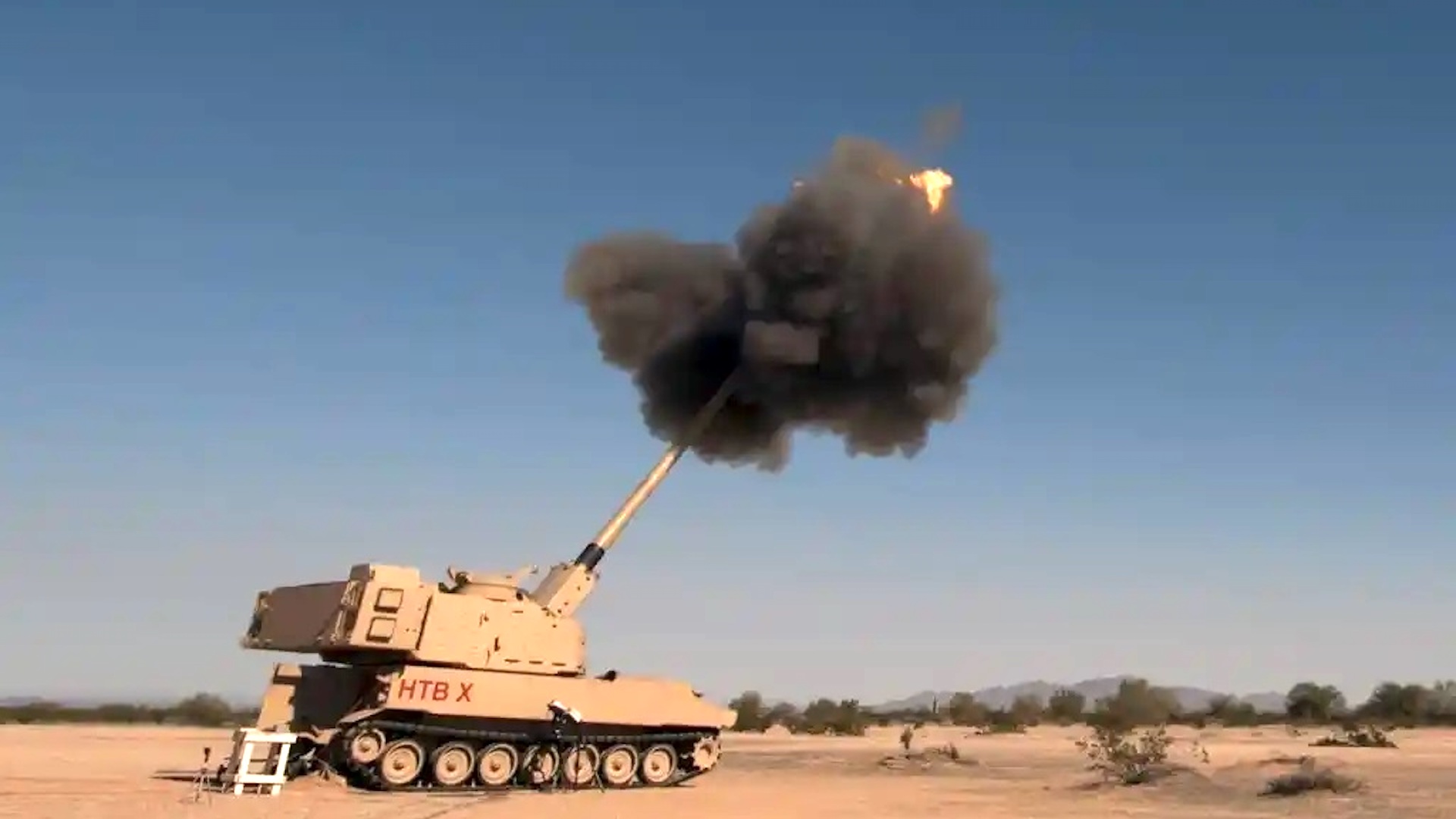

The Army’s newest long-range artillery shell has successfully nailed targets at “more than double the range” of the service’s existing precision-guided munitions, according to the primary defense contractor on the project.
In a Wednesday statement, British defense giant BAE Systems announced that its concept for the Army’s XM1155 Sub-Caliber program — the unique round designed to accompany the Extended Range Cannon Artillery (ERCA) system that’s a signature modernization priority for the service — had successfully nailed a fixed target “beyond ranges previously demonstrated by other precision-guided projectiles fired from the same type of cannon.”
The test, which took place at the White Sands Missile Range in New Mexico and used an Army-designed sabot package fired from the ERCA’s 155mm XM907E2 58 caliber cannon, marked the successful deployment of BAE’s Sub-Caliber Artillery Long-Range Projectile with Enhanced Lethality, the company’s unwieldy name for its XM1155-SC offering.
“This successful test confirms our Sub-Caliber Artillery Long-Range Projectile with Enhanced Lethality can defeat long-range targets and advance to follow-on testing out to double the range of existing guided projectile and with sensors to find fixed and moving targets of interest,” Brent Butcher, vice president and general manager of Weapon Systems at BAE Systems, said in a statement.
Subscribe to Task & Purpose Today. Get the latest military news, entertainment, and gear in your inbox daily.
While BAE spokeswoman Michelle Tiemeyer could not share a maximum distance that the specialized artillery shell reached in the recent test beyond “double the range” of existing precision-guided munitions, the BAE release notes that a technology predecessor to the current XM1155-SC concept, the Extended Range Hypervelocity Projectile (HVP-ER), had hit targets at a range of more than 68 miles (or 110 kilometers) during tests in early 2022.
That purported 68-mile range not only far outstrips the maximum range of, say, the precision-guided M982 Excalibur artillery rounds that can slap targets at ranges of 25 to 35 miles (40 to 57 kilometers), but it represents a major increase over the 43-mile range previously achieved by the ERCA cannon using Excalibur rounds during testing at the Yuma Proving Ground in Arizona in December 2020.

Originally conceived in 2018 in response to advancements in Russian and Chinese long-range fires, the ERCA itself is an upgraded self-propelled howitzer that leverages the base platform of the currently-fielded 155mm M109A7 Paladin system with an experimental cannon and breech assembly, according to a Congressional Research Service report on the Army’s long-range precision fires modernization efforts.
But while many Army leaders (and their industry partners) see the ERCA and accompanying next-generation artillery shells as an essential asset in the next big conflict against Russia or China — a prediction borne out by the blistering exhaustion of artillery rounds since the former’s invasion of Ukraine last year — not everyone is as sure.
In December of last year, Breaking Defense reported House and Senate lawmakers were questioning the service’s ongoing investment in the ERCA, unveiling compromise language for the fiscal year 2023 National Defense Authorization Act that capped the Army’s proposed number of ERCA prototypes to 20 while mandating a production strategy focused on the “comparative cost and value” of building the howitzers from scratch or using existing Paladins.
Those limits on the Army’s ERCA production sprint followed a scathing Government Accountability Office report the previous June that warned the system had “encountered multiple challenges during the past year, including delays in maturing critical technologies,” issues that are “likely to lead to schedule delays … and may lead to cost growth.”
Despite this, BAE systems doesn’t seem concerned. “We are confident that the projectile is on track to provide the Army the best munitions solution for cannon artillery with a leap ahead capability that will bring a highly lethal, maneuverable projectile to soldiers on the battlefield,” said Butcher in a statement.
The latest on Task & Purpose
- No, the VA isn’t going to reduce your disability payments if you make too much money
- Air Force 1-star general relieved for ‘shortfalls’ in personal conduct
- What are America’s goals in Ukraine? It’s not totally clear
- Russia is dusting off ancient tanks as losses mount in Ukraine
- How the Battle of Nasiriyah foreshadowed the long slog of the Iraq War